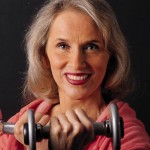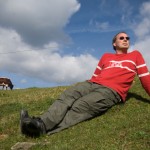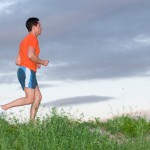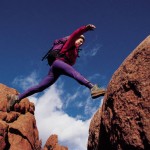This article is sponsored by WRRYFree Skin Care. As our gift to you receive 10% off your next WRRYFree Skin Care order through Aug 31, 2012. (Use coupon code HealthYourWay) WRRYFree Skin Care also offers $5.95 flat shipping and free shipping on orders over $75 to the USA. Founded by William R. Reynolds Young, the products we carry are “worry free” because every product is clean, safe, and effective for all ages. Our featured products this summer include our Bug Drug and Sunscreen. The Bug Drug uses Cat Nip Essential Oils that has been proven 10x more effective at repelling mosquito’s than DEET. Our Climb On! Sunscreen won one of the best beach and sport sunscreens in the EWG Sunscreen guide. Our popular Climb On! Bar and Crème always deserves a mention for its amazing healing properties from everything to cuts, scrapes, to dry skin and eczema. Order your supply at http://WRRYFreeSkinCare.com. Join our Twitter community http://Twitter.com/WFSkinCare and on Facebook family at http://on.fb.me/wrryfree. We are also proud to be a part of Great Outdoors Week at the Venture Outdoors Festival on May 19th, 2012 from 11am to 6pm at Point State Park in downtown Pittsburgh. Learn more, http://wrryfreeskincare.com/news/1111/venture-outdoors-festival.html
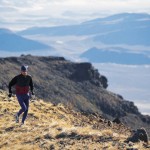
The Psychology of Endurance Events by Jim Day
Assuming that all the necessary training has been done, we are injury free and primed for our endurance event, what can possibly go wrong? More importantly, what can’t go wrong!
In any endurance event there will be highs, lows as well as coasting periods. The key is how we deal with each segment as, or if it arises.
The coasting periods are hopefully the bulk of the endurance event experience, however it is during these long sustained sections that we must keep our goal in mind and control our enthusiasm. The highs usually occur early on, so again we must temper our urge to over-do in the situation. It is critical to stick to the plan.
You do have a plan don’t you? No plan! Then how can you adjust what you don’t have?
You must have what-if scenarios so that you are able to deal with the expected and sometimes the unexpected. This saves time and can rekindle your confidence. Blisters, dehydration, blood sugar fluctuations, cold, wet, wind, etc. are all manageable.
But, inevitably, a low will come out of nowhere and test your physical and/or mental resolve. A strong mind will keep a weak body going, but a weak mind and the strongest foundation will tumble. The mental resolve to some degree comes with training and experience but is also an innate quality that matures literally with the years. Polar explorers were often in their late 30’s and early 40’s for this reason.
So what do we do while we are going through this learning-curve of mental toughness and stability? The following will help establish the foundation of your mental resilience that will surely be tested during endurance events:
Do not panic. Everyone goes through a similar experience at some point during a long race or event.
Be patient! Some lows wills pass of their own volition.
Determine if your challenge external or internal. Some problems are external for example a rock in your shoe or a leak in your water bottle. Stop, and fix the problem as soon as possible. Other low points are internal, and therefore mean the solution is to “fix-yourself!” Focus on a mantra, talk to yourself with encouraging and empowering words. Tell yourself that the discomfort is worth the success.
Align with fellow racers. Tag on to others if possible and let them drag you along. If in a team then tell the others so that you can all problem-solve and cope together, as no man is an island!
Keep moving. As long as you are not endangering yourself or others, sometimes the answer is to simply plod on!
Do the best you can when you can and judge yourself only by your own standards not others. But look to improve your standards, slowly pushing to the limits which only you can reach.
A Personal Experience During the ‘Exmoor 100’, a hundred mile event, to be completed within 48 hours, I experienced the following challenges. After only 10 miles I had a bad hip pain-solution? I took some painkillers. As the miles progressed the hip pain went away but then I started feeling nauseas and by the time I reached the 50 mile checkpoint I was struggling to keep food down. Over the next 50 miles the nausea relaxed a little and my discomfort switched to my feet, both big toe nails were excruciating (later they fell off). Stamina-wise however, I had no problems. I felt strong, alert and in no distress. The night section had gone well and there were no navigation problems. I walked the event in 35 hours 21 minutes. I finished and in a good time. Why? Because I wanted to, I had prepared well (as my stamina showed) I had solved the hip problem and the other discomforts to me were tolerable. One event presented many emotions, situations and challenges! However, I tended to each challenge as it presented itself and pushed through. Another day however and I may not have finished- life holds no promises!
By Jim Day of Dudley, England. Jim provides endurance based training advice and services for those preparing for treks, marathons, and other various endurance events. For more information, go to http://www.trek-fit.co.uk
 Subscribe
Subscribe


